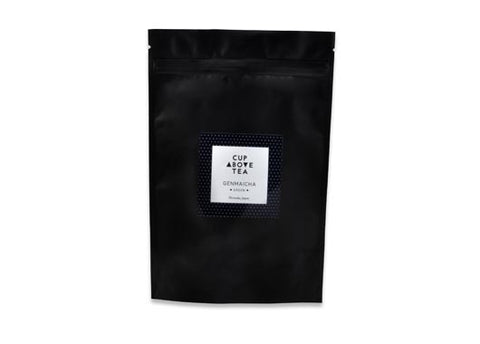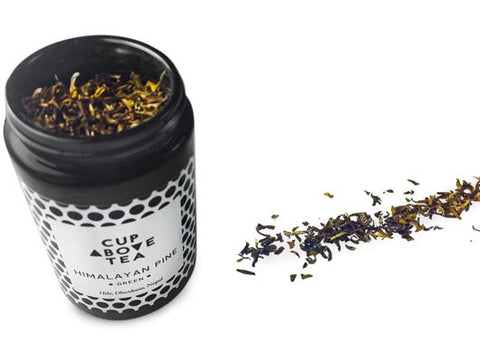Gyokuro - green tea
$3.95

| Style | Green Tea | |
| Origin | Kurihara Family Garden, Yabe Village, Yame, Japan | |
| Season | Spring 14 | |
| Altitude | 680m | |
| Batch | TJGY1 | |
| Plant | Camellia sinensis sinensis, Yabukita varietal (bamboo shaded) | |
| Tea Master | Master Kurihara |
Gyokuro is the very best of Japan’s green teas and the Kurihara family are renowned for their excellence in craftsmanship. Shade grown before harvesting and lightly steamed; expect a buttery texture, delicate tannins and umami flavours. Leafy green vegetal notes transition to a lasting sweet finish. It’s a privilege to drink.

 |
65 - 75 degrees Celsius | |
 |
1 x tablespoon (3 grams) | |
 |
150 ml water (small tea cup) |
|
 |
Infuse for 1 minute |
The Stories We Drink
|
Historically, gyokuro was exclusively produced in the Uji region, the birthplace of Japanese tea. The Yame region, where the Kurihara’s gyokuro is grown enjoys exceptional terroir and is also recognised for gyokuro production. These two areas have a reputation for producing some of Japan’s finest teas. The Kurihara’s gyokuro garden is 680 metres above sea level. This elevation contributes to a stronger flavour gyokuru than that grown further down the mountain. Tea bushes grow more slowly at higher elevations and this garden experiences significant temperature differences from day to night. Both these factors cause the plants to release stronger flavour compounds, helping them respond to the climate variations. The Kurihara’s have been growing tea in Yabe village for four generations. They have won awards for their gyokuro tea craftsmanship for many years. In the 1920s Great-grandfather Kurihara was a tea merchant in Fukuoka who rode a bicycle great distances to deliver his tea orders to his customers. After his shop was bombed during the war he decided to start making his own tea rather than selling the tea of others. He moved to Yabe and cultivated tea gardens that that the family still farm today. The Kurihara’s have progressively developed their processing equipment and gained a reputation as exceptional artisan producers. Yabe Village is a small and tight knit community. Thanks to their experience and expertise, the Kurihara’s are the primary processing family in the village. In small Japanese farming communities, many families don’t own their own processing equipment. These families rely on the Kuriharas to produce their tea for them. Often, the village teas are blended together to achieve a more consistent flavour from harvest to harvest, though the Kurihara’s always keep their own small batch premium leaf lots separate and unblended. They also make careful processing adjustments to bring out the unique character of their superior leaves and we are fortunate to have secured some for our collection. You can learn more about the Kuriharas and gyokuro here. |
|
Craftsmanship
|
The Kurihara’s produce their gyokuro from a small parcel of very select plants within their garden which are cultivated differently from all the others. About three weeks before harvest time, these plants are shaded with a double or triple layer of thin tarpaulin cloths. This shading is what makes a gyokuro a gyokuro. Multiple thin layers are used instead of just one thick layer, as the plants still need some sunshine, airflow, and rain and to develop. The Kurihara’s shading eliminates about 85% of all light and forces the plant to draw more nutrients from the soil because the usual photosynthesis process is greatly reduced. This triggers intense chemical changes in the leaf and results in higher concentrations of amino acids and theanine, which contribute to the distinct rich umami taste that characterises gyokuro. The high amounts of amino acid force the plant to manufacture high levels of chlorophyll. Chlorophyll would normally help the leaf grow in regular sun-lit conditions, but because of the reduced light from the shading, the plant doesn’t grow at the same rate and this excess chlorophyll is retained accounting for the unmistakable bright, midori green colour of the tea. After 21 days, these select leaves are harvested and processed. The raw tea leaves are withered on the ground for a few hours to remove moisture before being quickly steamed on a small conveyor belt to prevent oxidation and keep the leaf green. The leaves are then rolled and shaped into little thin needles. |
|

















